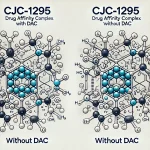
In today’s healthcare landscape, the value of patient-centric, preventative care cannot be overstated. Medical professionals often make the mistake of diving headlong into treatments without first conducting a comprehensive analysis of the patient’s condition.
However, the benefits of such a detailed pre-treatment examination are vast, especially when offered at no additional cost to the patient. Let’s explore this through the lens of a recent case we evaluated.
At Dripdok, our primary focus is on delivering positive patient outcomes rather than merely chasing return on investment. Our patients deeply appreciate and resonate with this philosophy. While many clinics may rely on extensive marketing campaigns or emulate others in the industry, we believe in the genuine value of the services we offer.
Our dedication to patient well-being speaks for itself and has always been our most authentic form of outreach.
Meet Mr J – A 39 Year Old Male Presenting To Our Clinic
Mr J, approached us with concerns about his knee and back. Our team performed a detailed analysis comprising of knee imaging, blood tests, and a lumbar spine examination. Here’s what we found and why this in-depth analysis matters.
Names and identifiers have been removed as well as all imaging and blood work scoring.
Knee Imaging: Unearthing Past Injuries
Mr J MRI highlighted chronic changes to specific ligaments in his knee. While there were no alarming tears or fluid buildups, signs pointed to a past injury. This kind of information is vital. Knowing the history of an injury allows healthcare providers to tailor treatments, preventing further damage and ensuring optimal healing.
Blood Analysis: Unmasking Hidden Risks
A detailed blood panel revealed Mr J had high cholesterol and LDL levels, both indicators of potential cardiovascular risks. These findings underscored the importance of addressing his cardiovascular health and guided our recommendations. Such data is paramount for preemptive care, allowing for lifestyle adjustments before more severe complications arise.
Using the RRS prediction model we found he had less than a 2% chance of heart attack or stroke in the next 10 years.
Cook NR, Paynter NP, Eaton CB, Manson JE, Martin LW, Robinson JG, Rossouw JE, Wassertheil-Smoller S, Ridker PM. Comparison of the Framingham and Reynolds Risk scores for global cardiovascular risk prediction in the multiethnic Women’s Health Initiative. Circulation. 2012 Apr 10;125(14):1748-56, S1-11. doi: 10.1161/CIRCULATIONAHA.111.075929. Epub 2012 Mar 7. PMID: 22399535; PMCID: PMC3324658.
Lumbar Spine: The Backbone of the Issue
A closer look at Juan’s lumbar spine revealed some minor issues. A slightly straighter curvature and disc concerns in the lower back hinted at potential future complications.
Knowing this, we could propose regenerative therapies and exercises specifically tailored to his needs. This proactive approach is invaluable, as it can prevent further deterioration and costly surgeries down the line.
He was given at-home treatment which he reported the next day – removed all pain.
The Economic Angle: Quality Care, Quantifiable Savings With Patient-Centric Care
Beyond the immediate health benefits, there’s a significant economic incentive to this kind of detailed pre-treatment analysis. Consider the back pain statistics: post-surgery complications can skyrocket treatment costs from an average of $42,554 per person.
By investing time and resources using patient-centric care upfront, Dripdok can potentially save you thousands in future medical expenses.
The Bigger Picture: Why Patient-Centric Care Matters
Juan’s case isn’t unique. Across the globe, countless individuals could benefit from such comprehensive pre-treatment analyses. By understanding the intricacies of a patient’s health, medical professionals can provide more targeted, effective treatments. Patient-centric care not only leads to better health outcomes but also more efficient and cost-effective care.
Moreover, providing these insights at no additional cost to the patient emphasizes a healthcare model that truly prioritizes the patient’s well-being. It’s an approach that fosters trust, understanding, and a collaborative spirit between healthcare providers and those they serve.
Through patient-centric care, healthcare providers can uncover underlying health issues and tailor treatment plans accordingly, reducing the risk of misdiagnosis or ineffective treatments.
This proactive approach not only improves patients’ quality of life but also reduces the burden on healthcare systems. By investing in patient-centric care, Dripdok aims to revolutionize the medical industry and prioritize the long-term well-being of individuals.
This commitment to patient-centric approach that is comprehensive, personalized care sets the foundation for a healthier future for patients worldwide.
Conclusion
Mr J’s case illustrates the immense value of a detailed pre-treatment analysis. By diving deep into his health metrics and crafting a tailored treatment plan, we can potentially prevent further complications, enhance his quality of life, and save significant medical costs. This patient-first approach is the future of healthcare, ensuring that individuals receive the best care possible without any hidden expenses.
Join us next time as we continue to explore the transformative power of patient-centric care in modern medicine.
Take your survey today to find out what true patient-centric care feels like.



